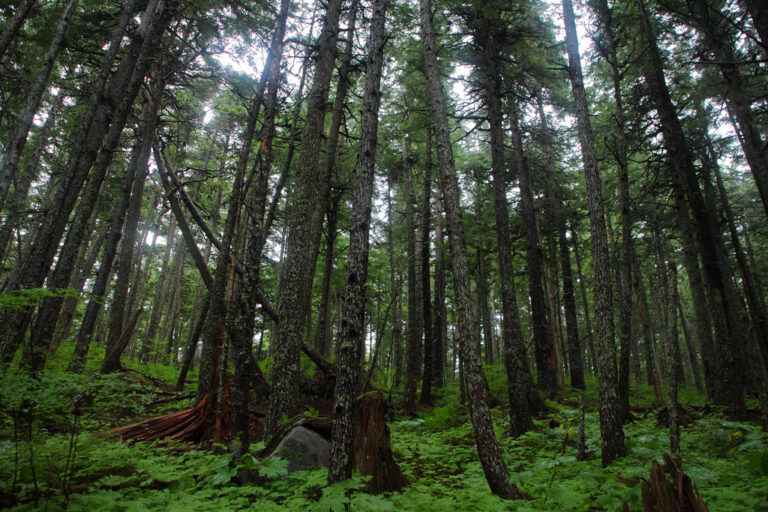Carbon Credits are a new way to generate income from forests by leaving trees in the ground. The state of Alaska is setting up its own program, and the Haines State Forest could be involved. But the local timber harvest plan will need to be updated to accommodate the new program.
Global temperatures are rising. The scientific one agreement is that humans are causing this warming by releasing greenhouse gases into the atmosphere, which trap the sun’s heat. One approach to solving this problem is to put a price on carbon. This would allow entities that remove carbon from the atmosphere to get paid for that service.
For example, suppose I own a tree that removes carbon from the air, and my neighbor drives a car that emits carbon into the air. My neighbor could pay me not to cut down that tree so that the tree absorbs the carbon emitted by his car. Our neighborhood could then be called climate neutral.
In practice, it may never be worth it to build a program around one tree and one car, but there are plenty of companies that emit millions of tons of CO2 and have pledged to become carbon neutral. Buying carbon credits is one of the easiest ways to do that. When you, like the state of Alaska, own millions of acres of forest, leaving trees in the ground becomes a business opportunity.
The Alaska Department of Natural Resources is currently to compose a carbon offset program. Trevor Fulton runs that program and he was recently in Haines to give a presentation.
Fulton: “We are still developing the regulations for those programs, and that is a process we hope to have completed in the coming months.”
The state will try to develop its own programs, and also lease state land or coastal areas to private entities so that they can develop their own programs. Some indigenous companies –Sealaska some of them have been running carbon offset programs on their own land for years.
Carbon offset programs allow companies and landowners to trade carbon credits. A carbon credit is equal to one ton of carbon. This is approximately the amount of carbon emitted by driving a car from Anchorage to Seattle.
Fulton says that in the case of the Haines State Forest, carbon credits would be created through optimized forest management practices. He says those credits are worth about $15 each. But when asked how much revenue the 280,000 hectares of national forest around Haines could generate, he is cautious.
Fulton: “That really depends on the credit generation, it depends on the wood we are looking at, it depends on the type of trees that are there, the maturity of those trees. And it depends on how much timber crop is still allowed to be harvested in those areas. We expect fairly modest revenues initially, but given the vast amount of land and resources we manage, there is a lot of opportunity, and we hope to see it grow over the years.”
Under the law, 80% of the program’s revenue would go to the state’s general fund, and 20% would go to a fund to promote renewable energy in Alaska.
An external auditor would be responsible for finding out how much carbon the forest absorbs. Managers can improve a forest’s carbon sequestration potential through plantings, removing competing vegetation, fertilizing, reducing timber harvests, establishing nature reserves and fire prevention. .
Aside from keeping most of the trees in the ground, the program does not limit land use, according to Fulton.
Fulton: “The project area will remain open for other uses, things like hunting and fishing and recreation and public access in general, as well as other resource development activities, including to some extent timber harvesting.”
During the presentation, some people wondered how the program would impact Haines’ timber harvest plan. Ranger Greg Palmieri said the plan would be updated.
Palmieri: “The plan has been opened specifically for this process to include the carbon offset program in policy language. That said, due to the fact that this is also a management plan amendment, the opportunities to comment on the entire plan will be open to the public when the public review draft goes to the public.”
The DNR website states that there will be a 60-day comment period at the end of the year for residents to voice their opinions on the draft management plan. In the meantime, the department is conducting a series online surveys that staff will take into account when rewriting the plan.
The forest management plan was last amended more than twenty years ago. Officials expect to complete the changes by April next year.


